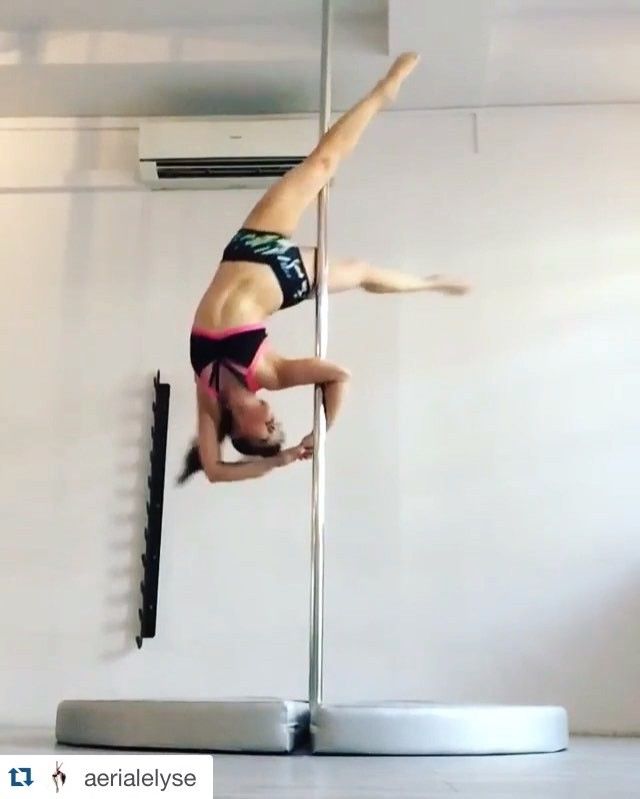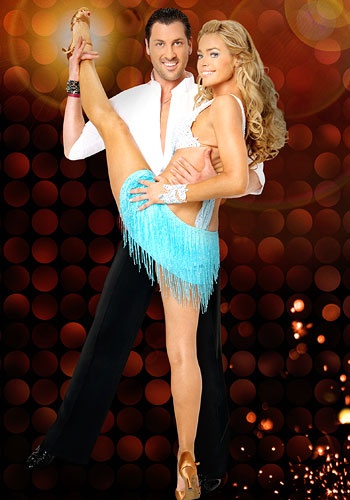How to do the side step dance
Learn Basic Cha Cha Steps
Cha cha is a fun, flirtatious dance with playful energy. It's a blend of other Latin dances, especially mambo and rumba. The major difference between cha cha and mambo/rumba is a triple step (cha cha cha) that replaces the slow step.
- Basic steps
- Instructions & Diagrams
- Video
- Recommended Video Lessons »
Quick intro
Cha cha is widely recognizable by its catchy rhythm – one, two, cha, cha, cha. It's easy to learn and fun to dance.
Like so many Latin dances, it originates from Cuba. It was developed by the Cuban composer and violinist Enrique Jorrin in the middle of 1950s. Originally it was known as a slowed-down mambo or "the triple mambo", because of the three quick steps. It gained instant popularity due to its simplicity. In time it evolved into a separate dance and although it was originally known as the cha-cha-cha, the name was shortened to the cha-cha.
Did you know: Bruce Lee, the famous movie star and one of the greatest legends in martial arts, was also an accomplished Latin dancer. He won the Hong Kong Cha Cha Championship in 1958, when he was 18 years old.
Cha cha can be danced to almost any music with a good beat, from traditional Latin rhythms to club music, from country to pop. It's popularity can be heard in the music of Ricky Martin, Jennifer Lopez, Marc Anthony, Tom Jones, Carlos Santana, and many others. Cha cha is very much a dance of today.
Basic steps
Cha cha music is composed in 4/4 time (four beats to a bar of music). For each bar of music there are 2 slow and 3 quick steps, which may be counted as – one, two, cha, cha, cha or step, step, step, quick step, quick step. The footwork is simple and mostly focuses on just shifting weight from one foot to another.
Remember, five steps are taken to four beats of music. Also don't forget that the movements tend to be somewhat flirtatious.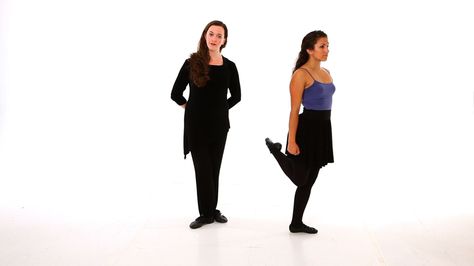 This is definitely a party dance!
This is definitely a party dance!
Instructions & Diagrams:
Partners face each other. Gentleman starts with the left foot, lady starts with the right foot. Basic ballroom hold.
Basic Side Step for Men
- Sidestep to the left with your left foot
- Step backward & left with your right foot
- Left foot in place, weight shifts to it
- Sidestep to the right with your right foot
- Move your left foot to your right foot
- Sidestep to the right with your right foot
- Step forward & right with your left foot
- Right foot in place, weight shifts to it
- Sidestep to the left with your left foot
- Move your right foot to your left foot
Basic Side Step for Women
- Sidestep to the right with your right foot
- Step forward & right with your left foot
- Right foot in place, weight shifts to it
- Sidestep to the left with your left foot
- Move your right foot to your left foot
- Sidestep to the right with your left foot
- Step backward & left with your right foot
- Left foot in place, weight shifts to it
- Sidestep to the right with your right foot
- Move your left foot to your right foot
Video
In this video Leon and Kim will first show you the basic step done "in place" and then with the side step:
more videos »
OK, now that we have the basic steps under our belt, let's explore further. In the following video Jaimee and Mark will show you the whole range of cha cha figures, starting, of course, with the basic:
Where to go next?
As you've seen in the second video, there's a lot that cha cha has to offer. To get to that next level we recommend these video lessons »
7 TikTok Dance Moves You Can Learn At Home
TikTok is filled with short, fun dance routines that you can watch for endless hours (trust me, I've done it), share with friends, and learn at home with STEEZY.
But, let's face it.
If you don't have a dance background, the short, hard to follow tutorials on TikTok can be a frustrating roadblock to joining in on the fun.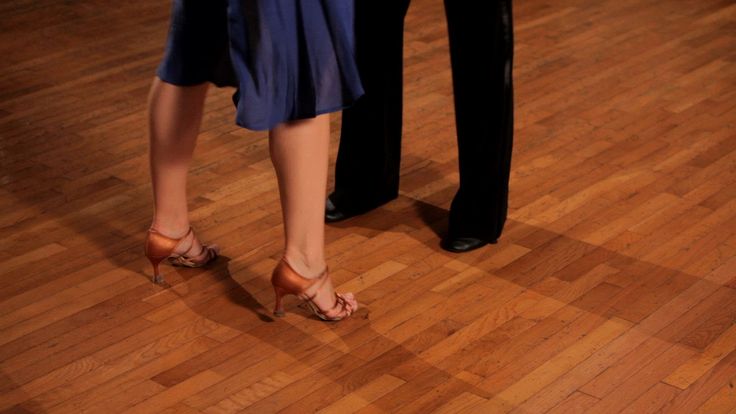
Here are simple, easy ways you can learn the 7 most popular moves on TikTok.
1. The CitiRokk
The CitiRokk is that one SUPER POPULAR TikTok dance move where you rock your body from side to side and cross your arms in front of your chest.
Watch this video with the move’s creator, CitiBoyRio, to see how the move took over TikTok!
*BONUS*
While the CitiRokk was popularized on TikTok by the Renegade dance routine, CitiBoyRio just dropped a new routine of his own!
Learn the CitiRokk Shuffle routine just in time before it goes viral. 😎
Hit this link to learn both the CitiRokk and the CitiRokk shuffle step-by-step on STEEZY Studio.
2. The Woah
Just WATCHING people hit the Woah gets me excited.
It's simple, hype, and easy to apply to any song with a dope bass beat.
If you've been lurking on TikTok for any time at all, you've probably already seen it yourself and understand how it's supposed to look.
How you create the reverb motion, where to position your arms, and when to move your body to hit the beat on time is all you need to learn. 👇
3. The Swagg Bouncee
Do your hips naturally sway from side to side when a good song comes on?
Think of the Swagg Bouncee as your natural hip-sway's cooler, trendier sibling.
Lil Rich Swagg, who created the Swagg Bouncee, says to “Stay on your tippy toes to get a full range of motion,” in his STEEZY Studio class.
By committing to the move and making it bigger, you'll look more confident!
4. The Kangsta Wok
In the video below, this TikTok dance move's creator, Zaya Sosho, explains how he based the Kangsta Wok on a "dip" move he saw during a cypher.
When you do the Kangsta Wok, make sure not to over- or under-exert your energy.
Attack each level drop with a little intensity to make the move look extra hype, but don't go so hard that your body tenses up!
You want to make it look effortlessly cool. 😎
Still not totally sure how to make that happen?
Don't worry... Zaya Sosho will teach you in the tutorial below!
Use this guide to help to you practice too!
5. The Smeeze
This move first entered the dance scene in 2009, but at the time, it was mainly used during battles and parties.
When TikTok arrived in 2018, the move's creator, Chonkie, knew this was the perfect platform to bring the Smeeze to the next level.
With hashtags like #SMEEZEEVERYWHERE, and dance crews like the Jabbawockeez picking it up, the Smeeze quickly became a TikTok favorite.
You can learn more about it from Chonkie himself in this video!
While millions of people are, in fact, Smeezin' everywhere, the move can be a little tricky due to the alternating movements of the arms and legs.
Use this step-by-step tutorial to get the timing jussssst right!
6. The Bust Down
As far as TikTok dance moves go, the Bust Down is definitely on the sexier end of the spectrum.
Characterized by a scoop/thrust motion of the hips, the move is great for raunchy club jams like "Thotiana" by Blueface – the song that popularized the move!
If adding a lil sexy swagger to your movement feels like climbing Mt. Everest, know that practice and repetition will be your best friend!
STEEZY's tutorial breaks the move down simply and efficiently, so you can learn it in just 9 minutes and repeat sections LITERALLY AS MANY TIMES AS YOU WANT.
Trust us, you'll have swag down to a science.👨🔬
7. The Cosby Walk
Yes, when executed the right way, the simple act of marching can become a dope dance move!
Watch our video with Rated R, creator of the Cosby Walk, to see exactly what we mean:
As you're learning this move, make sure you're placing your feet firmly on the floor and evenly distributing your weight!
If your bottom half is weak and wobbly, you'll look more bambi than bad@$$.
Related article: Why Staying Light On Your Feet Is Actually Bad Advice
As much as we love watching the mesmerizing 15-second dance tutorials that already live on TikTok...
It's LIFE-CHANGING to have legit dancers break moves down and make them easy to learn.
Now, you have everything you need to master the hottest dance moves and join fun challenges on TikTok.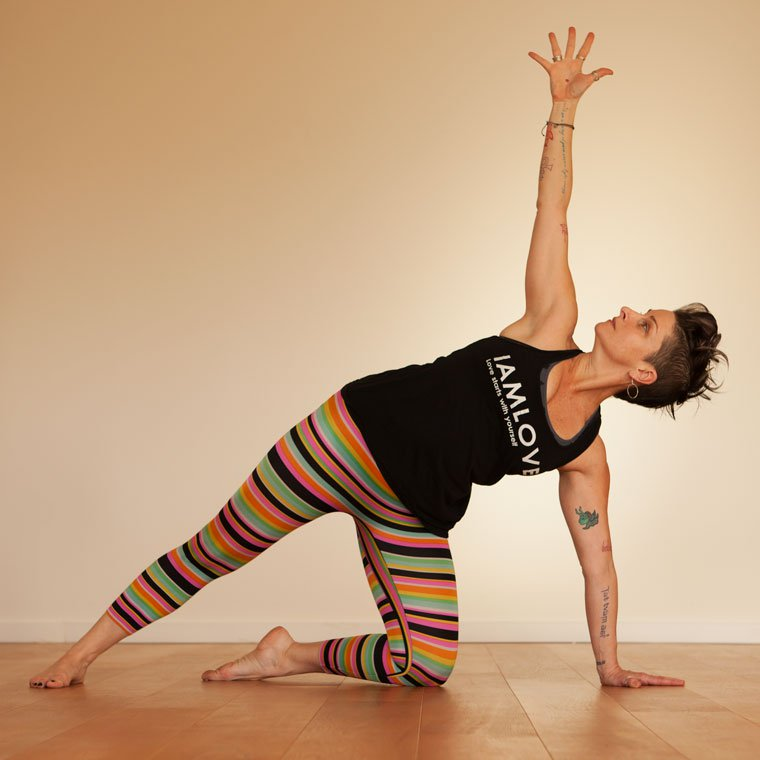
Start learning now for free!
Gallop step
Name:
Pas (fr.) - step
Galoper (fr.) - gallop, gallop, gallop.
Pas galop (Pas gallop) - a step with a slight tamping of the legs, a movement that imitates the riding of a rider on a horse.
Pas of the canter is a continuous Pas glissé with the same foot. But when performing the Pa gallop, when the legs are pulled up to the half-toes, a small jump is performed.
Pas canter can be performed forward, backward, sideways.
Music
Time signature 2/4 (polka).
Pa canter takes 1/2 measure.
Score: I-1-I-2 (I)
Preparatory exercises
- Transfer of body weight from two legs to one.
- Bringing the foot to the toe - battement tendu - tandu battman in 1 position (right foot and left foot).
- Rise on the half-toes (relevé - relevé) in 1 and 3 positions.
- Side steps.
- Pas glissé - sliding step.

PA CANTER TO THE SIDE - LATERAL CANTER
PA canter from the right leg (to the right)
Starting position.
The dancers stand in a circle, facing the center.
Feet - in 1st position (or 3rd position, right foot in front).
Hands on the belt.
| Account | Movement description |
| Start-up (I) | Before starting the movement, transfer the weight of the body to the supporting left leg. Bring the right leg to the side on the toe. Soften the knee of the skating left leg. |
| 1 | Take a sliding step (Pa glide) with the right foot to the side from the toe to the low half-toes. The left leg is left out on the toe. Slightly softened knees. |
| and | Quickly pull the left leg to the right leg (sliding toe on the floor) in 1 pos.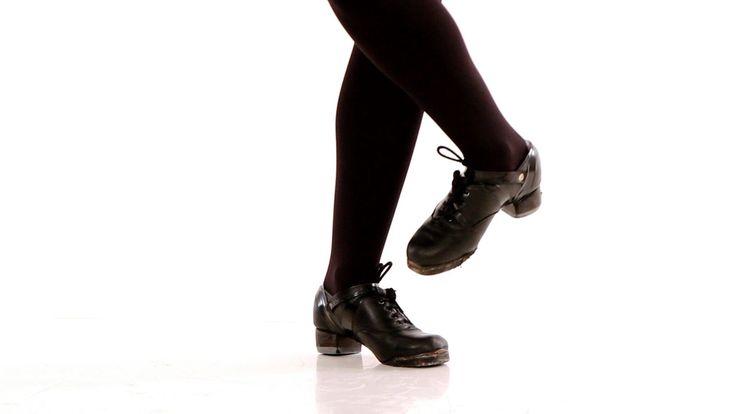 and with a small jump, as it were, slightly knock out with the left foot - the right foot (the heels of the legs should connect with a light blow). and with a small jump, as it were, slightly knock out with the left foot - the right foot (the heels of the legs should connect with a light blow). In the jump, the knees of both legs are almost straight. Immediately (from the jump) gently lower yourself onto your left leg, from the toe to the entire foot. Shift your weight onto your left leg. Soften the supporting left leg at the knee. Move the right leg to the side on the toe. |
| 2nd | Repeat the movement to the right |
Canter pas from the left leg (to the left)
Performed in the same way.
Notes:
- When performing Pa canter, the weight of the body remains behind, closer to the supporting leg (the leg that kicks).
- Pas of the gallop is performed with a slight inclination of the body to the supporting leg, in the direction opposite to the movement.
- The head turns in the direction of movement.
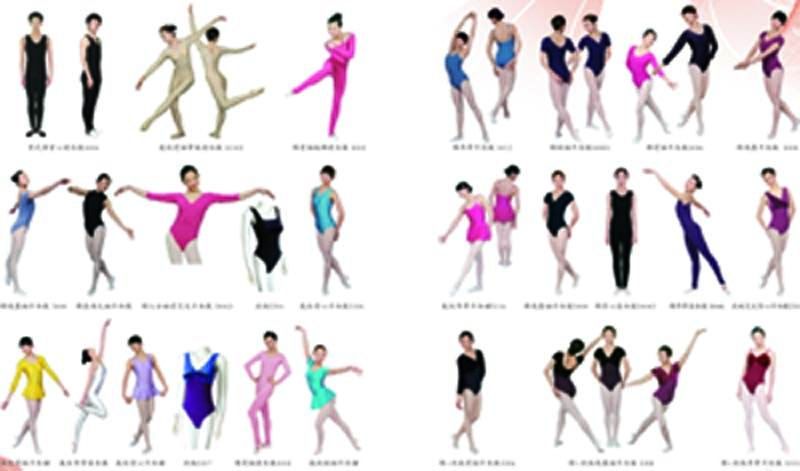
- Pas gallop - movement along the floor, sliding, creeping and continuous. The sliding nature of the movement is emphasized by the fact that the rise and fall should not be noticeable. It is unacceptable to make big jumps up.
- The movement is lateral, the body must not turn towards the stepping leg.
Literature
- " Ballroom dance of the 16th - 19th centuries. ". Ivanovsky N.P. Under the editorship of Yu.I. Slonimsky. Moscow-Leningrad, ed. Art, 1948
- " Modern ballroom dance ". Manual for students of cultural institutions, students of cultural and educational schools and leaders of ballroom dance groups. Edited by V.M. Striganova and V.I. Ural. M., "Enlightenment", 1978
- "Dance ". Textbook for theatrical universities (on stage dance). Vasilyeva E.D. M., Art, 1968
- " Rhythm at school, the third lesson of physical culture ". Teaching aid. J.E. Firileva, A.I. Ryabchikov, O.V. Zagryadskaya, Rostov-on-Don "Phoenix", 2014
Video for the dance element "Pa gallop"
The dance element is demonstrated by Galina Mikhailovna KONDRATENKO, head of the City methodological association of ballroom dance teachers at the St. Petersburg City Palace of Youth Creativity.
Petersburg City Palace of Youth Creativity.
Recorded at the seminars of the City methodological association of ballroom dance teachers in St. Petersburg.
Steps and movements of Belarusian dance
The foundations of Belarusian dance originated in the era of the ancient Russian Kievan state, on the basis of which three peoples developed and formed - Russian, Ukrainian and Belarusian.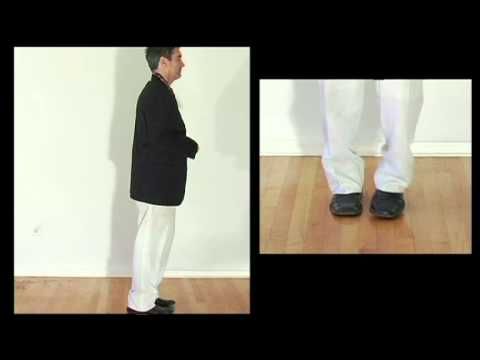
Dance art has always occupied a significant place in the national culture of Belarusians. There was not a single significant event in life that there was no place for dancing in it. And although the dance elements did not always take on a finished form, they, as a rule, were artistically bright and had a considerable influence on the further development of folk choreography.
And today we continue the theme of Belarusian dance. Consider the main movements and moves of the Belarusian folk dance.
Movement No. 1. The main move in the Belarusian dance “Lyavonikha”
The performer makes a sliding wide step forward, then two small steps forward with slipping on low half-toes. A move is made in 6th position, with a very rapid advance forward, knees bent.
Starting leg position: 6th position .
Time signature: 2/4.
on-beat I The right leg, having slipped the toe along the floor, rises slightly forward, the knee is free, the instep is extended, but not tense.
Raz A wide quick step with the right foot forward from the toe to the entire foot, the knee is bent. The left leg, slightly separated from the floor, is pulled up to the right leg at the level of the foot, the knee is bent.
And The left leg descends near the right in the sixth position,
Two A small quick step forward with the right foot, slipping the toe along the floor and, descending from the toe to the other foot, the knee is bent. The left leg is lifted slightly forward in preparation for the next step
AND Beginning a quick step forward with the left foot. The movement continues with the other leg.
The swiftness of the stride must not be lost on gliding steps following the first wide stride, but there must be no high jumps or side to side movements in the stride. The body during the course is straight or slightly inclined forward. Characteristic is the position of the hands No. 1, in paired performance - Position No. 6 (hands crossed “in front of you”).
1, in paired performance - Position No. 6 (hands crossed “in front of you”).
Movement No. 2. Lateral stroke with padding (canter)
The performer takes a side step with one foot, the other leg from the side knocks out the supporting leg and takes its place. The move is performed on low toes and bent knees, which are directed forward and close to one another. The blow is performed with the heel of one foot on the heel of the other.
Starting position of the legs: 6th position.
Time signature: 2/4.
Raz Side step with the right foot to the right on low toes, the knee is bent and directed forward.
And The left foot, with a slight jump, knocks out the right foot by hitting the heel against the heel and lowers onto low half-toes in place of the right foot, which, after tamping, is slightly thrown to the right; knees are close to each other.
Two Side step with the right foot to the right, as if counting "one".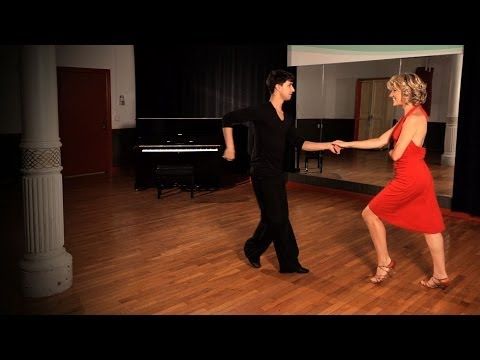
And The left leg kicks the right leg, as in the count of "one-and-one".
The move is performed with one foot, right or left, moving to the right or left, in a straight line or in a circle. The body is straight or slightly inclined forward. Hands are in position No. 1, in pairs - in position No. 11, No. 7, etc. The movement is performed clearly, easily, quickly.
Movement No. 3. Move with a beat in the Belarusian dance
The performer with a blow falls on the entire foot of one leg behind the other, after which he “steps onto the half-toes of the other leg.
Starting position of the legs: 3rd position, left foot in front. The performer stands facing the viewer, but the body is turned sharply with the left shoulder forward.
Time signature: 2/4.
Raz The right leg, slightly separated from the floor, with a blow of the whole foot falls to the floor behind the left leg, the knee is bent.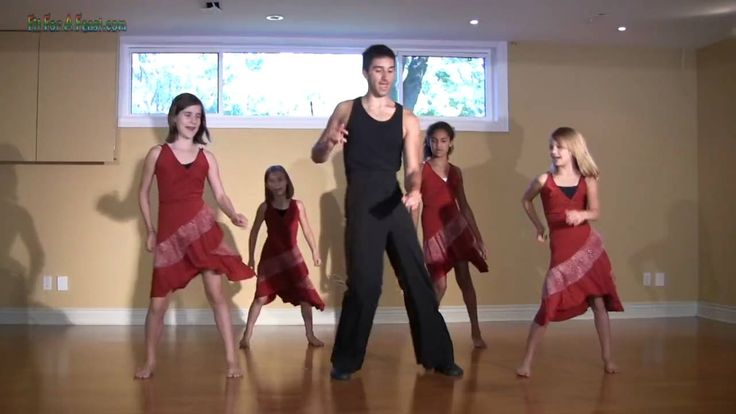 The left leg sharply rises low forward, towards the viewer, the knee is extended, the rise is free, the toe is directed towards the viewer. The body is directed with the left shoulder forward in the direction of travel and slightly tilted to the right side.
The left leg sharply rises low forward, towards the viewer, the knee is extended, the rise is free, the toe is directed towards the viewer. The body is directed with the left shoulder forward in the direction of travel and slightly tilted to the right side.
and The left leg, without bending at the knee, with a blow falls on the toes forward in the direction of movement at a distance of a step.
Two The right leg, slightly separated from the floor, bent at the knee, with the impact of the entire foot on the floor, is placed behind the left leg. The left leg rises sharply forward, as in the count of "one"
AND Repetition of the movement to the count of "one-and".
The movement is performed with one foot (right or left) moving forward. One leg is always bent at the knee, the other is extended. The body is directed with the right or left shoulder forward and slightly deflected against the course of movement, the head is raised and the face is right in the direction of movement.
The movement is performed clearly, easily, lively.
Movement No. 4. Backward move in the Belarusian dance
The performer takes two steps back on the half-toes, the third step - on the whole foot, raising the free leg not high forward.
Starting leg position: 6th position .
Time signature: 2/4.
Raz Step with the right foot back on the toes, the knee is free.
and Step left foot back on half toes, knee free,
Two Step with the right foot back on the whole foot, the knee is slightly bent. Left leg rises slightly forward,
AND Pause.
Continue with the left foot. The body is straight.
The move occurs in the dance "Lyavonikha", goes at a fast pace, easily and freely.
Movement No. 5. Stomp in three strokes
Three strikes with the whole foot on the floor, alternately with one and the other foot. Performed on bent knees.
Starting position of the legs: 6th position.
Time signature: 2/4.
Raz Stuck the whole foot of the left leg near the right leg in the 6th position. The right leg
is slightly separated from the floor, bent at the knee, with an unstretched instep.
And Stomp the whole foot of the right foot near the left foot in the 6th position. The left leg is slightly separated from the floor, bent at the knee, with an unstretched instep,
Two Press the entire foot of the left leg near the right leg in 6th position,
And Pause.
During flooding, the body tilts slightly forward. The footsteps are combined with the course of "Lyavonikhi", "Kruzhachka" and other dances.
Movement #6. The main move from the Belarusian dance "Kruzhachok".
The performer makes a jump with slipping forward on the low half-toes of one leg, raising the other leg forward, steeply bent at the knee, then three steps forward on the low half-toes.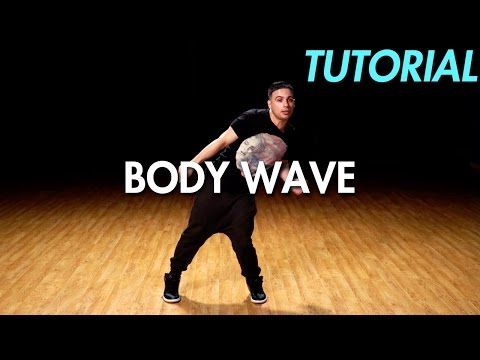
Starting leg position: 6th position .
Time signature: 2/4.
start-up and The performer, jumping a little, slips forward on the low half-toes of the left leg, the knee is attached. The right leg rises forward, steeply bent at the knee; the knee is directed forward, the instep is extended, but not tense.
Raz A small step forward with the right foot on low toes, the knee is bent.
and A small step forward with the left foot on low half-toes, the knee is bent.
Two A small step forward with the right foot on low toes, the knee is bent.
And The performer, having jumped a little, slips forward on the low semi-toes of the right foot, as if on a “beat”. The move continues with the left foot. The movement is carried out calmly, evenly, provocatively, moving forward, in a straight line, in a circle or with rotation in place. During the entire stroke, the knees are bent and directed forward.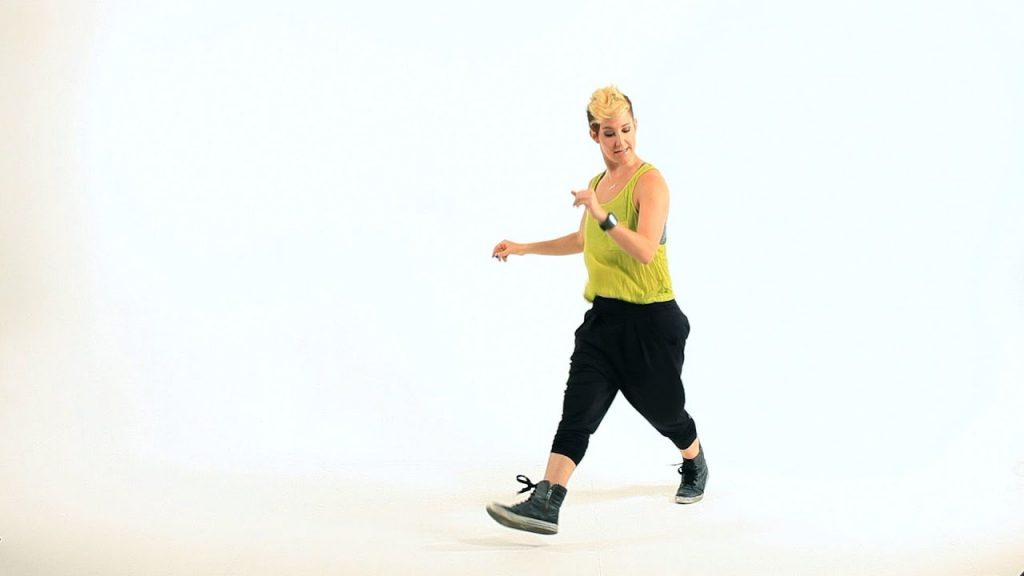 The body is straight and should not be exaggeratedly tilted back. Hands can be in position No. 1 and No. 2, in a pair dance - in position No. 8, etc.
The body is straight and should not be exaggeratedly tilted back. Hands can be in position No. 1 and No. 2, in a pair dance - in position No. 8, etc.
Movement No. 7 (female). The main movement in the Belarusian dance "Bulba".
The movement combines a jump on one leg with a kick with the other leg in the 6th position. Starting position of legs: 6th position .
Time signature: 2/4.
on the beat and the right leg rises slightly forward, free at the knee and instep. On the second sixteenth jump on the low semi-toes of the left leg, the knee is free,
times Strike with the ball of the foot of the right leg, without bending it at the knee, near the left leg in the 6th position,
and the second jump on the low half-toes of the left leg, the knee is free. The right leg rises low forward, free at the knee and instep,
two Jump to the low half-toes of the right leg, the knee is free. Left leg.
rises low forward, free at the knee and instep,
and Pause.
On the second sixteenth jump on the right foot, as on the “backbeat”.
Movement continues on the other leg.
Hop ups should be done with the spring in the instep, knees free.
Movement No. 8. Jumping and stepping on the spot in the Belarusian dance. Women's movement from the dance "Bulba".
Having made a jump on one leg, the performer then lowers herself onto the half-toes of the other leg.
All movement is performed on bent knees.
Usually in the dance "Bulba" this movement is combined with the movement of the hands, reproducing the tearing of tops from a potato patch.
Starting position of the legs: 6th position.
Time signature: 2/4.
start-up and Jump on half-toes of the left foot. The right leg is separated from the floor, bent at the knee, the knee is directed forward, the rise is free.
Raz The right leg from above descends to the half-toes near the left leg in the 6th position.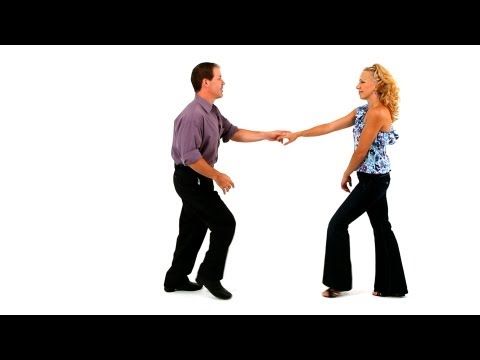 The left leg, bending at the knee, is separated from the floor. Both hands, close to one another, stretch out in front, fall down, the hands are clenched into a fist, as if tearing out the tops. The body is strongly inclined forward.
The left leg, bending at the knee, is separated from the floor. Both hands, close to one another, stretch out in front, fall down, the hands are clenched into a fist, as if tearing out the tops. The body is strongly inclined forward.
AND Jump on the half-toes of the right leg, the knee is slightly bent. Left leg
in the same position. In her hands, the performer, as it were, holds the tops.
Two The left leg from above descends to the half-toes near the right leg in the 6th position. Both hands are raised low to the left, the hands are unclenched, as if discarding the tops.
AND Repetition of the movement to the “back beat”. The movement is performed clearly, rhythmically.
Movement No. 9. Triple stepover jumps in place. Female movement from the dance "Bulba"
The performer makes a jump on one leg, then three times steps over with one and the other foot in place. The movement is performed on bent knees.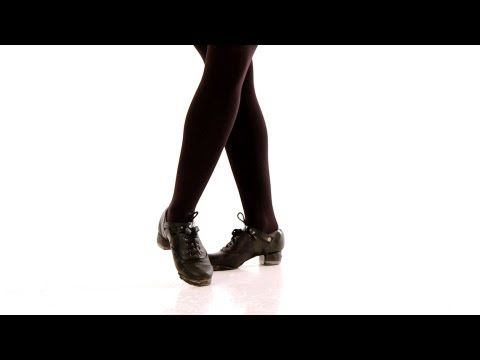
These jumps in the dance "Bulba" may be associated with the movement of hands, imitating the weeding of potato beds.
Starting position of the legs: 6th position. Musical size: 2/4.
start-up and Jump on half-toes of the left leg, bent at the knee. The right leg, bent at the knee, is separated from the floor, the rise is free. Hands are raised to the right. The body leans slightly forward and to the left side, the head turns to face to the right.
Raz The right leg goes down on the toes near the left leg in the 6th position, the knee is bent.
and The left leg is separated from the floor, bent at the knee. Hands, dropping, are held in front of the performer, as if pulling out grass. The body is tilted forward. The head falls, accompanying the movement of the hands. The left foot falls on the half-toes, next to the right foot in the 6th position. The right leg is separated from the floor. The knees are bent and directed forward.
Two The right leg goes down on the toes, as if in the 6th position, the knee is bent. The left leg, bent at the knee, is separated from the floor, the rise is free. Hands rise to the left, as if discarding the torn grass. The body tilts slightly to the right side, the head turns to the left, accompanying the movement of the hands.
and Jump on the half-toes of the right leg, the left leg in the same position.
The second type of this movement is performed on free knees: on the “back beat”, the leg is thrown back from the knee.
Movement No. 10. Polka with rotation in Belarusian dance.
The performer makes a light jump on one leg, throwing the other leg away from the knee “back”, then performs three steps on half-toes, with a turn to the right or left, or with lateral movement in a circle.
Polka exists in several forms.
1st view . The polka is performed with an advance to the side and a full turn in two measures.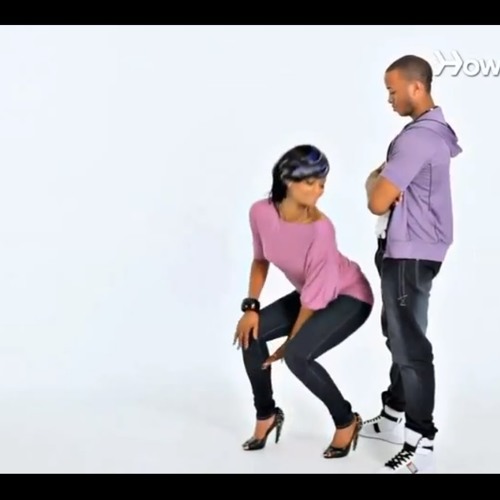 At the expense of "two-and" the working leg rises from the knee back and slightly to the side.
At the expense of "two-and" the working leg rises from the knee back and slightly to the side.
Starting position of the legs: 6th position.
Time signature: 2/4.
The movement takes two beats behind the beat and the Performer makes a light jump on the half-toes of the left leg,
raising the right leg, bent at the knee back and slightly to the right, the rise is free.
1st measure
Time The performer makes a small side step with the right foot to the right on the half-toes, the knee is bent.
And The left foot is placed on the half-toes to the right foot.
Two The performer makes a small eversion lateral step with the right foot on the half-toes, starting to turn to the right, the knee is bent. The body is turned with the left shoulder towards the viewer.
AND The performer makes a light jump on the half-toes of the right foot, turning half a circle to the right, with his back to the viewer.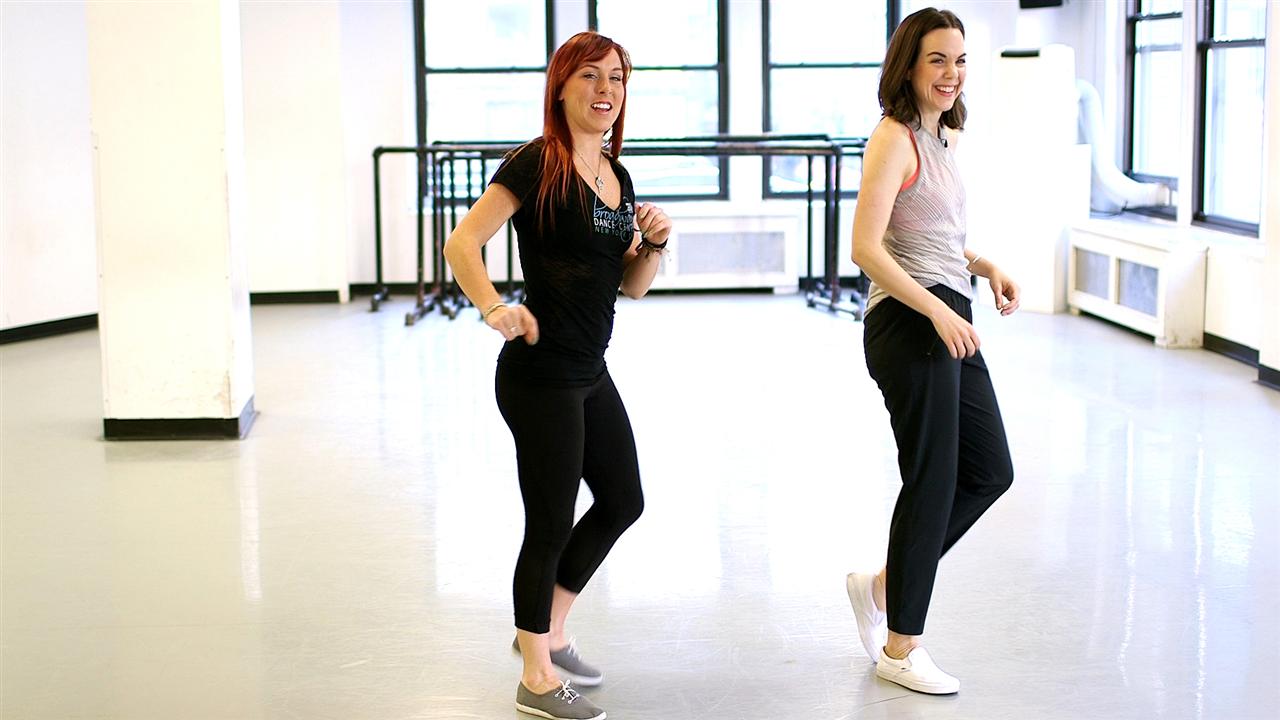 The left leg from the knee rises back and slightly to the left.
The left leg from the knee rises back and slightly to the left.
2nd measure
Movement continues with the left foot. On the count of “two-and” on the jump, the performer turns another half circle to the right, facing the viewer, completing a full turn.
Polka is performed with turns several times to the right or left. The body is straight. For hands, positions No. 1 and No. 4 are characteristic, in pair dance - positions No. 10 ″ and No. 11. Sometimes the polka with rotation is performed in pairs, with lateral advancement in a circle.
2nd form
Polka performed on the spot with a full turn in one measure. The turn begins on a jump and continues with each step over in place with one and the other foot. On the count of “two-and”, simultaneously with the jump on the supporting leg, the working leg rises back, across the supporting leg.
Rotation is performed several times in one direction, right or left.
Body straight. Positions No. 1 and No. 4 are typical for the hands.
Positions No. 1 and No. 4 are typical for the hands.
In the Bulba dance, girls in twos or threes, facing each other and embracing each other behind the waist, perform the polka movement, moving on the steps in a circle, to the right or to the left so that the whole circle rotates slowly.
Movement No. 11. Polka with a turn from to Belarusian dance. "Yanka"
The performer makes a light jump on the half-toes of one leg, raising the other leg, "bent at the knee, then performs three steps on the entire foot with an emphasis on the first" of them, turning half a circle.
Starting leg position: 6th position .
Time signature: 2/4. The movement takes two beats.
start-up and The performer makes a slight jump on the low semi-toes of the left leg, simultaneously separating the right leg from the floor, bent at the knee, the rise is free. The body is slightly tilted to the right side, to the raised leg.
1st measure
One The right leg with a blow falls on the entire foot near the left, the knee is slightly bent, the toe is directed forward.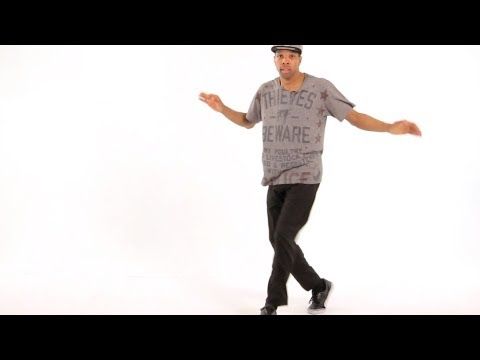 The left leg is slightly separated from the floor, bent at the knee.
The left leg is slightly separated from the floor, bent at the knee.
AND The left leg goes down on the whole foot near the right leg in 6th position, the knee is slightly bent. The right leg is separated from the floor. The body is straightened.
Two The right leg goes down on the whole foot, pointing the toe to the right, the knee is slightly bent. The turn to the right begins.
AND The performer makes a light jump on the low toes of the right foot,
turning half a circle, i.e. with his back to the viewer. The left leg is separated from the floor, bent at the knee; lift is free. The body leans to the left side, to the raised leg.
2nd measure
The movement continues in the same way from the left foot. The performer completes a full turn to the right, returning to face the viewer. This movement is often performed in pairs; then the girl starts the polka movement from the right foot, the young man from the left foot.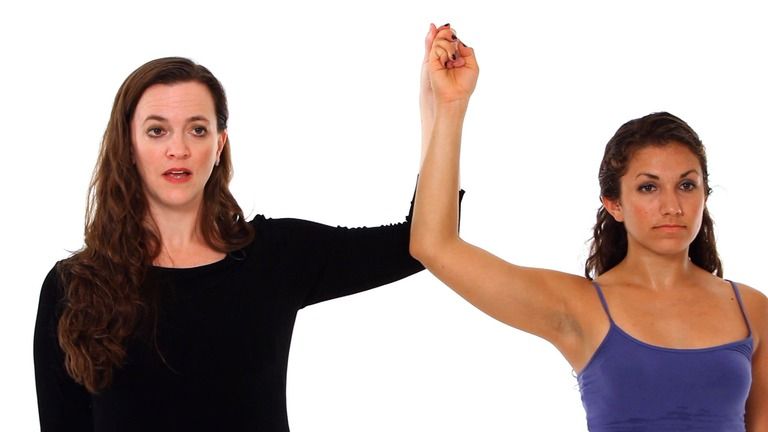 .During the jump, the body of each performer leans slightly towards the raised leg.
.During the jump, the body of each performer leans slightly towards the raised leg.
.Movement No. 12. A step with a double jump
Having taken a step, the performer jumps twice on the supporting leg, and the first time he falls on the low half-toes, the second time - on the entire foot. The other leg, when jumping, rises back, across the supporting leg.
Starting leg position: 6th position .
Musical signature: 2/4.
Haz Step right foot forward on half toes, knee free.
The left leg is raised back, across the right leg, bringing the foot just above the ankle of the right leg, the instep is free. The body turns sharply with the left shoulder forward. The head turns to the left shoulder,
AND Jump on the half-toes of the right leg, the knee is slightly bent. Left leg in the same position.
Two The performer, having made the second jump, descends on the entire foot of the right leg, slightly crouching. Left leg, body and head in the same position
Left leg, body and head in the same position
AND Pause.
The movement continues with the left foot. With each step, the body turns sharply, directing either the left or the right shoulder forward, in the direction of travel.
For girls, the position of the hands No. 4 is characteristic, for the boys - the position of the hands No. 1. The movement is performed easily, coquettishly, gracefully.
Movement No. 13 (female). Jumps on half-fingers on the 6th position in the Belarusian dance
The performer jumps three times on both legs in the 6th position, twice dropping to the half-toes, the third time - on the whole foot, slightly squatting. The body with the first jump turns either right or left shoulder forward.
Starting leg position: 6th position .
Time signature: 2/4.
Raz Jump on half-toes of both legs in 6th position, knees slightly bent and connected. The body turns left shoulder forward, the head - to the left shoulder.
And Jump, how about one,
Two Jump, dropping on the whole foot in 6th position and slightly crouching. Body and head in the same position.
AND Pause.
On the count of "one" of the next bar, simultaneously with the jump, the body turns sharply forward with the right shoulder.
Hands are characterized by position No. 4. The movement is performed easily, playfully, coquettishly.
Movement No. 14. Sliding on one leg with a kick-cushion of the foot of the other leg in Belarusian dance
The performer slides forward on the entire foot of one foot, then strikes with the ball of the foot of the other foot.
Starting leg position: 6th position .
Time signature: 2/4. The movement takes two beats.
1st cycle.
Raz Slip forward on the entire foot of the left leg, slightly bent in. knee. The right leg rises forward, the knee is bent, directed forward, the rise is free.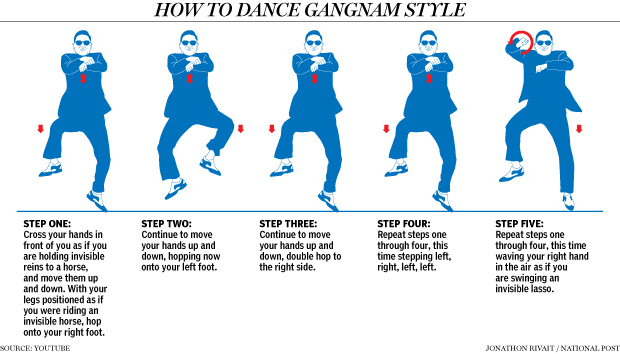
AND The performer hits with the ball of the foot of the right foot from above near the left foot, as if in the 6th position, the knee is bent and directed forward.
Two Sliding forward on the left foot, as if counting "one".
AND Strike with the ball of the foot of the right foot, how about "one-and".
2nd stroke .
One Slip forward on the left foot, as for the “one” count of the 1st measure.
And Strike with the ball of the foot of the right foot, as for the count of "one-and" of the 1st measure.
Two The second similar blow with the ball of the foot of the right foot.
AND Pause.
The movement is performed all the time with one foot, right or left. The working leg, making a blow, sharply, clearly falls to the floor from above and immediately bounces up again.
This movement can perform a paired spin; in this case, the impacts of the working leg on the floor are performed not with the ball of the foot, but with the heel.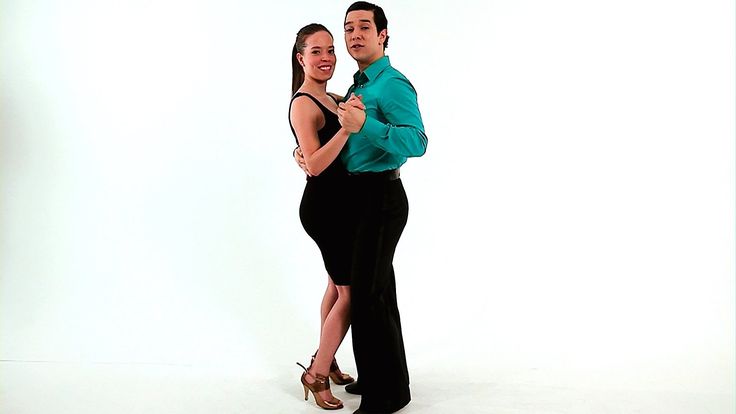 Standing obliquely, with the left shoulder to each other (hand position No. 10), the performers rotate counterclockwise, slipping on the left foot forward along the rotation and hitting the floor with the heel of the right foot.
Standing obliquely, with the left shoulder to each other (hand position No. 10), the performers rotate counterclockwise, slipping on the left foot forward along the rotation and hitting the floor with the heel of the right foot.
Movement No. 15. Jumps from side to side in the Belarusian dance
The performer jumps from foot to foot, then makes two steps in place, one foot crosses the other (motion like "padebasque").
Starting position of the legs: 3rd position, right leg in front.
Time signature: 2/4.
on-beat and The performer slightly squats on the entire foot of the left leg, raising the right leg forward, free at the knee.
Raz A small light jump from the left foot to the right, forward-right. The left leg rises slightly forward, the knee is free, the instep is extended, but not tense.
And The performer steps forward with his left foot on the half-toes and across the right leg.


